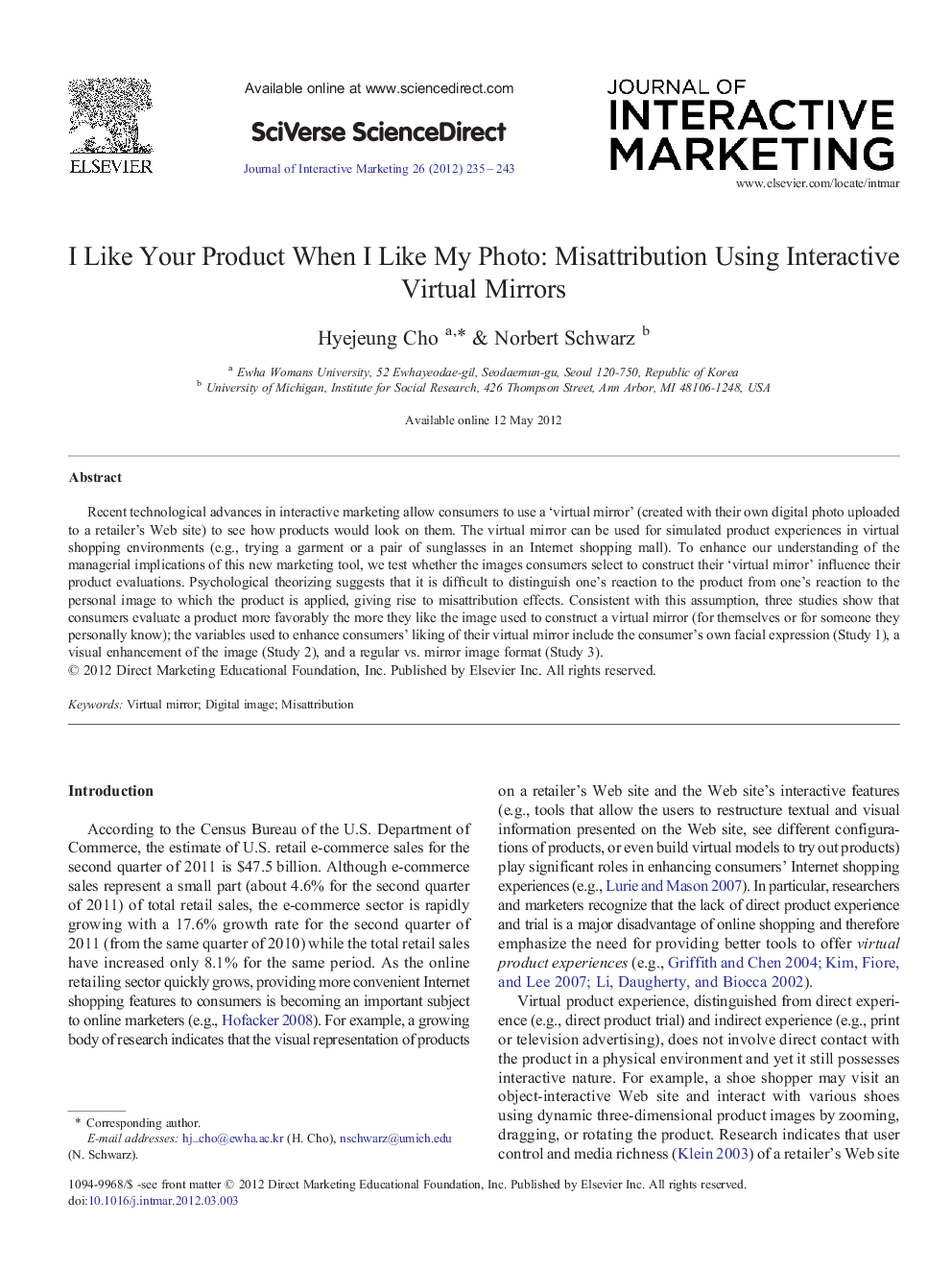| Article ID | Journal | Published Year | Pages | File Type |
|---|---|---|---|---|
| 886094 | Journal of Interactive Marketing | 2012 | 9 Pages |
Recent technological advances in interactive marketing allow consumers to use a ‘virtual mirror’ (created with their own digital photo uploaded to a retailer's Web site) to see how products would look on them. The virtual mirror can be used for simulated product experiences in virtual shopping environments (e.g., trying a garment or a pair of sunglasses in an Internet shopping mall). To enhance our understanding of the managerial implications of this new marketing tool, we test whether the images consumers select to construct their ‘virtual mirror’ influence their product evaluations. Psychological theorizing suggests that it is difficult to distinguish one's reaction to the product from one's reaction to the personal image to which the product is applied, giving rise to misattribution effects. Consistent with this assumption, three studies show that consumers evaluate a product more favorably the more they like the image used to construct a virtual mirror (for themselves or for someone they personally know); the variables used to enhance consumers' liking of their virtual mirror include the consumer's own facial expression (Study 1), a visual enhancement of the image (Study 2), and a regular vs. mirror image format (Study 3).
► The use of a virtual mirror created with a consumer's own digital image. ► Effect of a smile in the virtual mirror on product evaluation. ► Effect of graphical enhancement of the virtual mirror on product evaluation. ► Effect of the consumer's preferred image orientation format on product evaluation.
